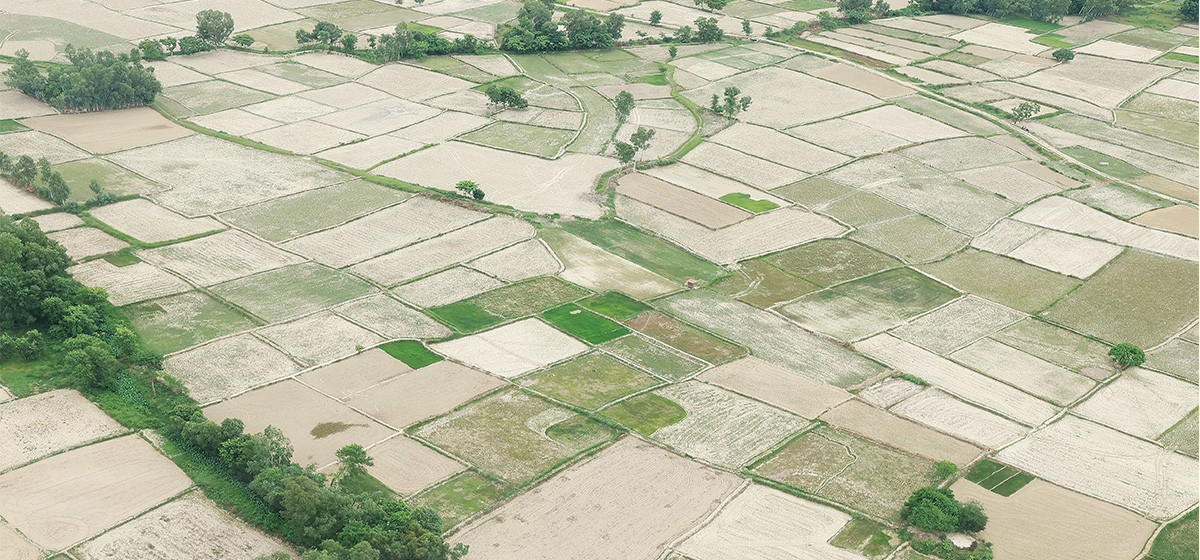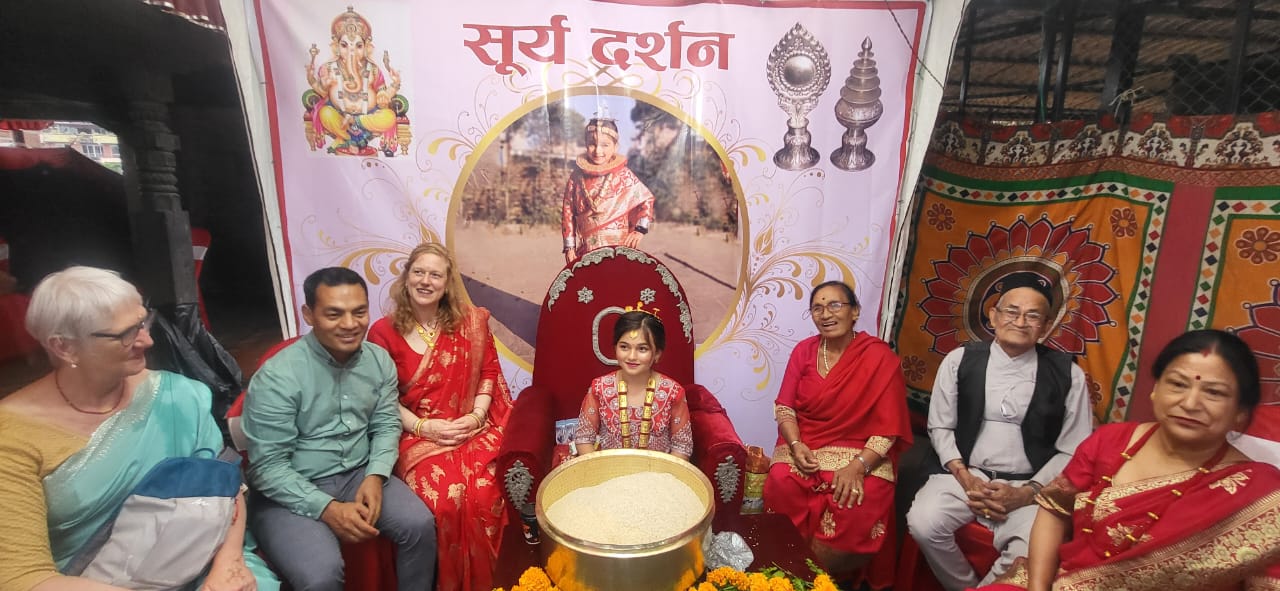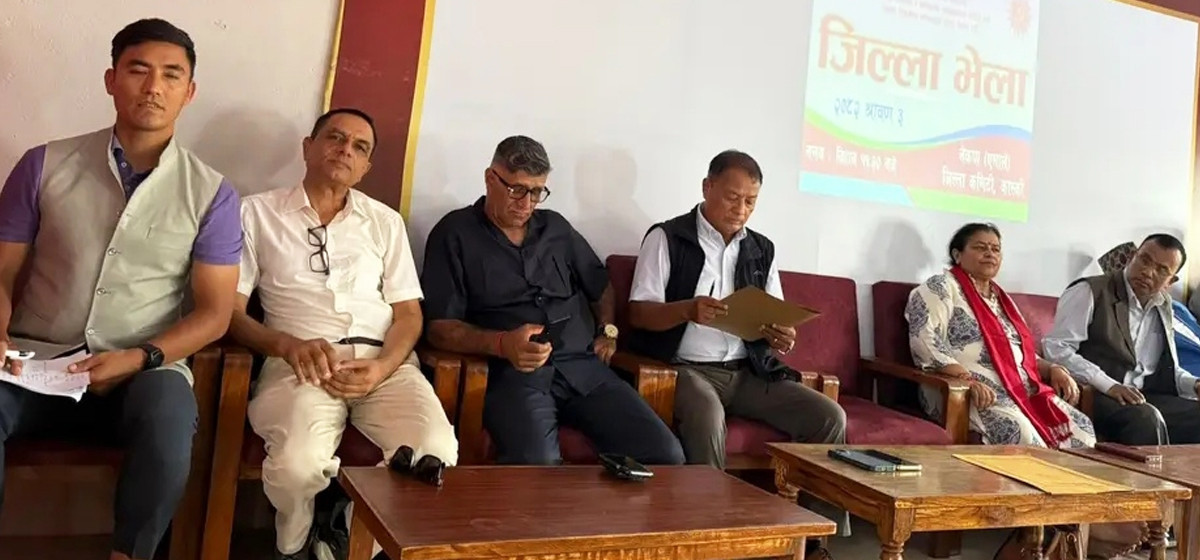BHAKTAPUR, Aug 6: Nepal’s identity has long been woven with threads of religious tolerance and cultural coexistence. From time to time, moments emerge that not only illuminate this diversity but also offer a beacon of hope and continuity for generations to come. Such a moment unfolded on Tuesday at Bhaktapur’s serene Muni Bihar, where an eight-year-old girl named Sterra celebrated her Gufa ceremony — a deeply rooted Newar tradition.
Gyanendra Prajapati, father of Sterra, grew up steeped in traditional Hindu customs and culture. His life partner, Zoy, hails from Belgium and practices Christianity. Their interfaith marriage, solemnized 15 years ago, has blossomed beyond a familial bond into a beautiful symbol of cultural harmony and mutual respect.
The entire city seemed to glow with joy as Sterra’s Gufa ceremony filled Muni Bihar with vibrant celebrations. Relatives, friends and extended family gathered in a warm embrace of tradition, with over 50 members traveling not only from Nepal but from Belgium as well, to partake in the joyous occasion.
In Newar culture, it is customary for girls to undergo the Gufa ritual as they approach adolescence. This ancient tradition was the very reason Sterra’s family journeyed to Nepal. “We came here for Sterra’s Gufa,” said Gyanendra, accompanied by Zoy. “A few of our Belgian relatives also joined us to witness this unique Nepali custom.”
Sterra herself described the experience as unforgettable. Sofia, a guest from Belgium, shared her delight: “I sat alongside Sterra during the Gufa. It was a truly memorable and beautiful experience.”
The ritual involves secluding the girl in a dark room devoid of sunlight for several years before her first menstruation. Symbolically, this represents a marriage to the Sun — regarded as her second marriage — and is a cornerstone of Newar cultural heritage.
Food crisis looms large as drought hits Madhesh districts

Sterra’s Gufa ceremony became a profound testament to the deep understanding and respect shared among Hinduism, Christianity, and Buddhism. “We are genuinely happy,” said Monk Udashen of the Bihar monastery. “Though our religious names differ, at the core, we are united as one.”
He expressed that the Gufa ceremony brings peace to all who observe it. “This sacred place transcends religion; it is a sanctuary where tradition, peace, and love flourish,” he remarked. “Perhaps you, too, felt that spirit here today.”
Others echoed this sentiment. Sterra’s uncle, Dipendra Prajapati, reflected, “This ritual means so much more than a personal rite of passage. We saw Hindu, Christian, and Buddhist participants alike — yet the joy on everyone’s faces was the same.”
Throughout the ceremony, monks guided foreign guests through the cultural significance of the Gufa, the meaning of sun worship, and its historical role in Buddhism. Translators helped ensure the visitors fully grasped the ritual’s depth. “Through Sterra’s Gufa, we sought to share our culture with our foreign family,” Dipendra said. “They observed every detail with great interest.”
Under the monks’ guidance, Sterra engaged in meditation sessions centered on peace and discipline. Her friends joined, transforming Bhaktapur’s Buddha Bihar into a serene gathering of multicultural harmony.
Most attendees donned traditional Bhadgaunle caps, and from children to elders, joyful expressions lit up the crowd. Belgian guests were visibly moved by the ritual’s beauty and significance. “Though our religions differ, love and tradition unite us,” said Zoy, smiling warmly. “Witnessing this chapter in my daughter’s life is a true blessing.”
Sterra’s maternal grandmother, Beyah Allen, grew emotional. “Being part of such a cultural celebration in Nepal is an honor,” she said. “This will remain one of my most treasured memories.”
Sterra’s family had previously visited Nepal as well. Gyanendra brought his son Victor to perform his Bratabandha ceremony, adhering to Hindu customs. Returning to Nepal from busy Belgian life to celebrate these cultural milestones reveals the family’s deep-rooted respect for their heritage.
Children abroad, tradition at heart
Tulsi Narayan Prajapati, Gyanendra’s father, resides near the iconic Kamal Binayak temple area in Bhaktapur. Though three of his four sons live abroad, their bond with Nepal’s cultural roots remains unbroken.
“Our sons may live far away, but tradition pulls them home,” Tulsi Narayan said, his eyes reflecting pride. “Whether it’s Bratabandha or Gufa, these moments fill our home — it feels as if the whole world gathers here.”
Gyanendra shared, “In Belgium, we grow up with modern education and religious freedom, but these Nepali rituals keep us connected to our roots. That’s why we return time and again.”
Tulsi Narayan beams with joy knowing his sons, despite living overseas, haven’t forgotten their heritage. “They cherish our traditions as much as we do,” he said. “That makes me truly happy.”
He recalled how all his sons have maintained cultural continuity abroad. “My sons in the U.S. and Australia have also come to Nepal for their children’s rituals,” he said.
Ceremonies like Annaprashan, Bratabandha, and Gufa are all observed in Nepal, reinforcing cultural ties. “Tradition links our sons to Nepal and us to our sons,” he smiled. “It’s heartwarming to see children abroad following our culture and gathering at home.”
Sterra’s Gufa ceremony at the Bihar monastery sends a timeless message — traditions never fade; they always find their way back home.





































